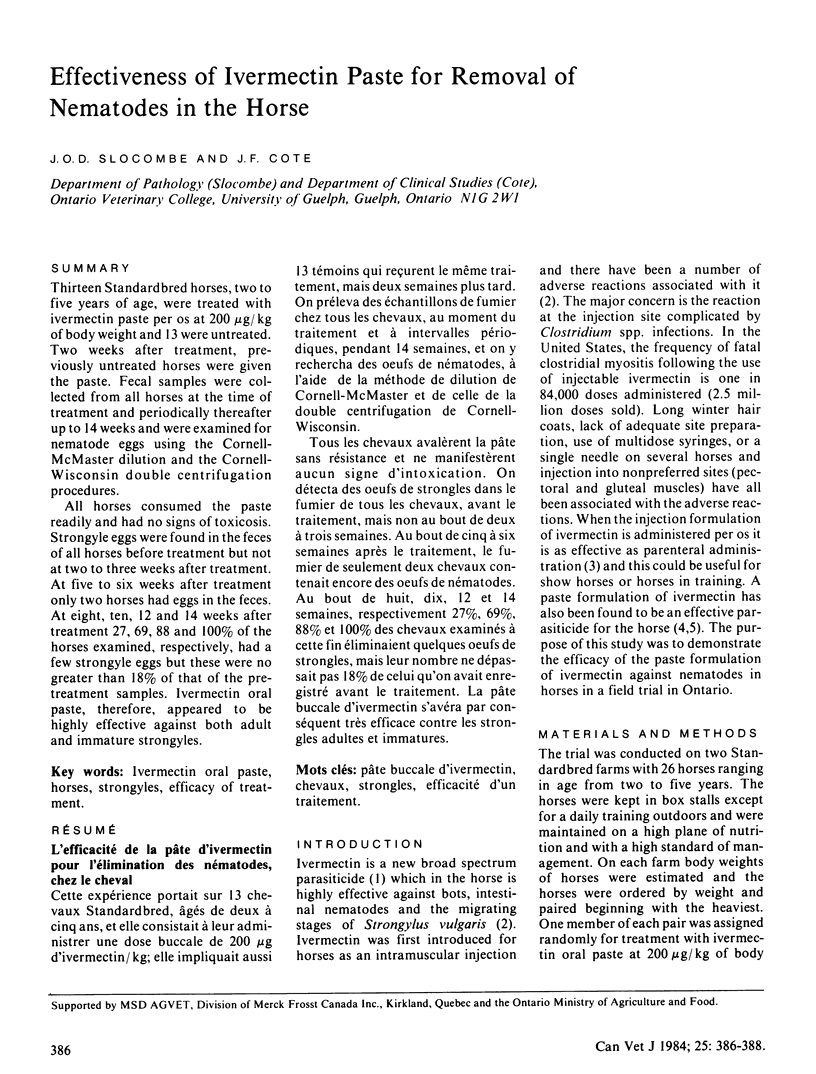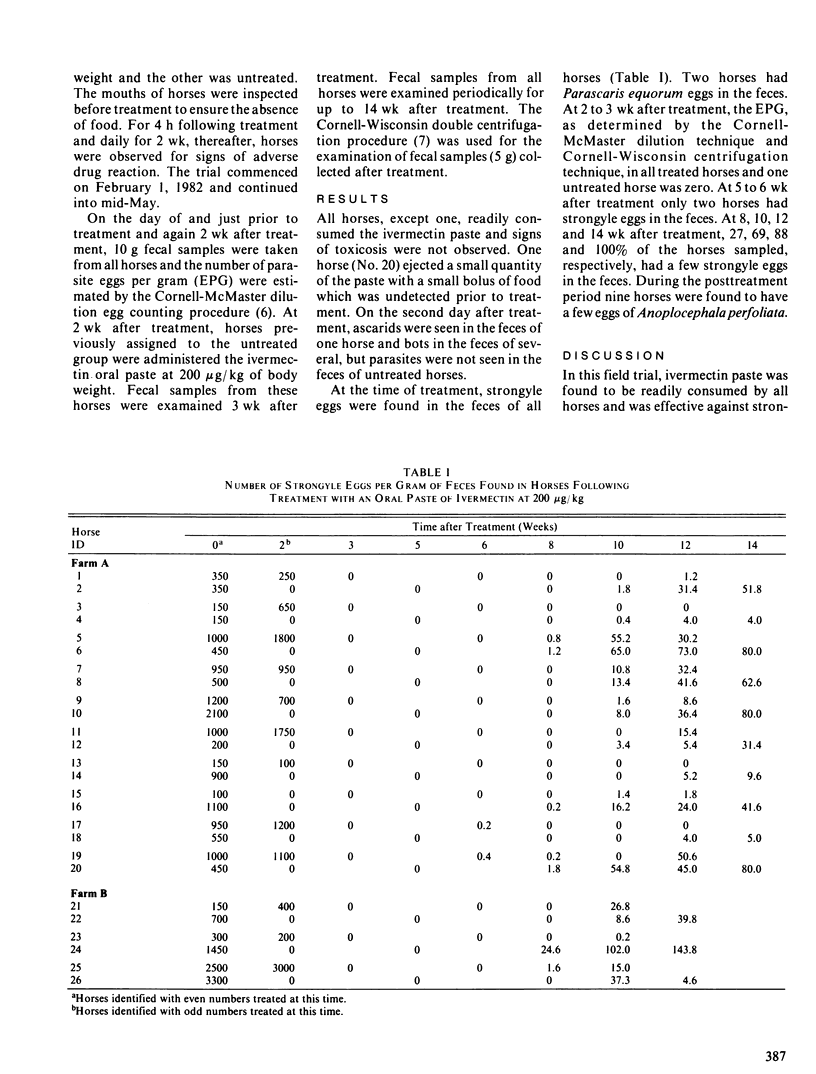Abstract
Thirteen Standardbred horses, two to five years of age, were treated with ivermectin paste per os at 200 μg/kg of body weight and 13 were untreated. Two weeks after treatment, previously untreated horses were given the paste. Fecal samples were collected from all horses at the time of treatment and periodically thereafter up to 14 weeks and were examined for nematode eggs using the Cornell-McMaster dilution and the Cornell-Wisconsin double centrifugation procedures.
All horses consumed the paste readily and had no signs of toxicosis. Strongyle eggs were found in the feces of all horses before treatment but not at two to three weeks after treatment. At five to six weeks after treatment only two horses had eggs in the feces. At eight, ten, 12 and 14 weeks after treatment 27, 69, 88 and 100% of the horses examined, respectively, had a few strongyle eggs but these were no greater than 18% of that of the pretreatment samples. Ivermectin oral paste, therefore, appeared to be highly effective against both adult and immature strongyles.
Keywords: Ivermectin oral paste, horses, strongyles, efficacy of treatment
Full text
PDF


Selected References
These references are in PubMed. This may not be the complete list of references from this article.
- Campbell W. C., Fisher M. H., Stapley E. O., Albers-Schönberg G., Jacob T. A. Ivermectin: a potent new antiparasitic agent. Science. 1983 Aug 26;221(4613):823–828. doi: 10.1126/science.6308762. [DOI] [PubMed] [Google Scholar]
- Egwang T. G., Slocombe J. O. Evaluation of the Cornell-Wisconsin centrifugal flotation technique for recovering trichostrongylid eggs from bovine feces. Can J Comp Med. 1982 Apr;46(2):133–137. [PMC free article] [PubMed] [Google Scholar]
- Kelly J. D., Webster J. H., Griffin D. L., Whitlock H. V., Martin I. C., Gunawan M. Resistance to benzimidazole anthelmintics in equine strongyles. 1. Frequency, geographical distribution and relationship between occurrence, animal husbandry procedures and anthelmintic usage. Aust Vet J. 1981 Apr;57(4):163–171. doi: 10.1111/j.1751-0813.1981.tb00503.x. [DOI] [PubMed] [Google Scholar]
- Klei T. R., Torbert B. J., Chapman M. R., Turk M. A. Efficacy of ivermectin in injectable and oral paste formulations against eight-week-old Strongylus vulgaris larvae in ponies. Am J Vet Res. 1984 Jan;45(1):183–185. [PubMed] [Google Scholar]
- Lyons E. T., Drudge J. H., Tolliver S. C. Antiparasitic activity of ivermectin in critical tests in equids. Am J Vet Res. 1980 Dec;41(12):2069–2072. [PubMed] [Google Scholar]
- Slocombe J. O., McCraw B. M. Controlled tests of ivermectin against migrating Strongylus vulgaris in ponies. Am J Vet Res. 1981 Jun;42(6):1050–1051. [PubMed] [Google Scholar]
- Slocombe J. O., McCraw B. M. Evaluation of pyrantel pamoate, nitramisole and avermectin B1a against migrating Strongylus vulgaris larvae. Can J Comp Med. 1980 Jan;44(1):93–100. [PMC free article] [PubMed] [Google Scholar]
- Slocombe J. O., McCraw B. M., Pennock P. W., Vasey J. Effectiveness of ivermectin against later 4th-stage Strongylus vulgaris in ponies. Am J Vet Res. 1982 Sep;43(9):1525–1529. [PubMed] [Google Scholar]
- Torbert B. J., Kramer B. S., Klei T. R. Efficacy of injectable and oral paste formulations of ivermectin against gastrointestinal parasites in ponies. Am J Vet Res. 1982 Aug;43(8):1451–1453. [PubMed] [Google Scholar]


